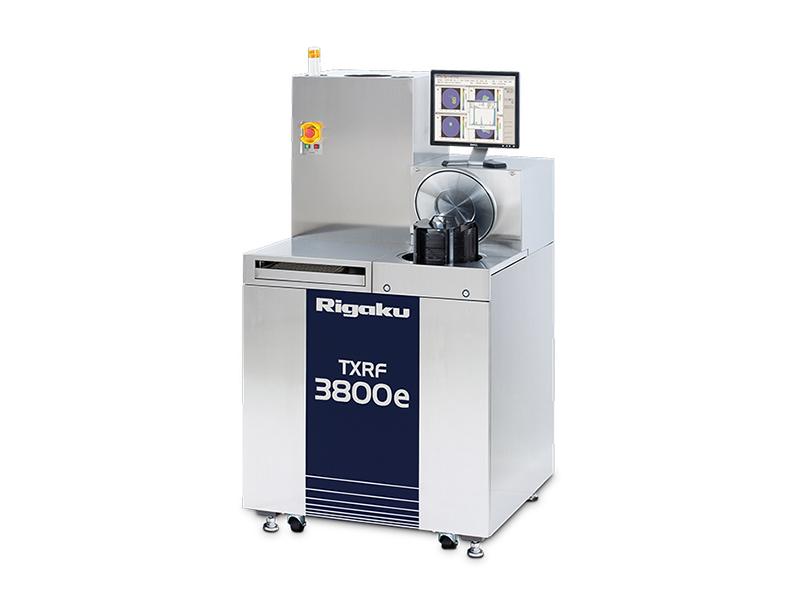TXRF 3800e
SURFACE CONTAMINATION METROLOGY
Measure elemental contamination at discrete points or with full wafer maps

Features
- Ease of operation and rapid analysis results
- Accepts 200 mm and smaller wafers
- Low cost of ownership
- Compact design, footprint
- Sealed X-ray tube source
- Wide range of analytical elements (S~U)
- Application to bare Si and to non-Si substrates
- Zero edge exclusion (ZEE-TXRF) measurement capability
- Import measurement coordinates from defect inspection tools for follow-up analysis
Introduction
Cleaning, litho, etch, ashing, films, and other fab operations can all be contaminated using TXRF analysis. With a single-target, dual-beam X-ray system and a revolutionary liquid nitrogen-free detector system, the TXRF 3800e can test elements from S to U.
The Rigaku patent-pending X-Y-sample stage technology, an in-vacuum wafer robotic transfer system, and new user-friendly windows software are all included in the TXRF 3800e. All of these factors lead to increased throughput, precision, and ease of everyday operation.
Sweeping TXRF software, which is available as an option, allows mapping of contamination distribution throughout the wafer surface to locate “hot spots” — up to zero edge exclusion.
All of these characteristics are contained within a fresh, small, and functional design. All maintenance work may be done through the front and back panels, allowing other cleanroom equipment to be put alongside the TXRF 3800e. This represents a significant reduction in the cost of cleanroom space.
Specifications Table
| Product name | TXRF 3800e |
| Technique | Total reflection X-ray fluorescence (TXRF) |
| Benefit | Rapid elemental analysis, of S to U, to gauge wafer contamination in all fab processes |
| Technology | Dual-beam TXRF system with liquid nitrogen-free detector |
| Core attributes | Up to 200 mm wafers, XYθ sample stage system, in-vacuum wafer robotic transfer system |
| Core options | SECS/GEM communication software. Sweeping TXRF software enables mapping of the contaminant distribution over the wafer surface to identify “hot spots” |
| Computer | Internal PC, MS Windows® OS |
| Core dimensions | 1000 (W) x 1760 (H) x 948 (D) mm |
| Mass | 100 kg (core unit) |
| Power requirements | 3Ø, 200 VAC 50/60 Hz, 100 A |
